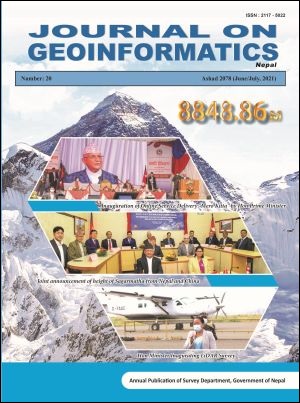Fusion of Radar and Optical Data for Land Cover Classification Using Machine Learning Approach
DOI:
https://doi.org/10.3126/njg.v20i1.39476Keywords:
Google Earth Engine, Land cover, Random Forest, Sentinel, Synthetic Aperture RadarAbstract
This study evaluates the advantages of combining traditional space borne optical data with longer wavelengths of radar for land cover mapping. Land cover classification was carried out using Optical, radar data and combination of both for the Bardiya district using Random Forest algorithm. The fusion of optical and radar shows better land cover discrimination with 96.98% overall accuracy in compared to using radar data and optical data separately with overall accuracy of 69.2% and 95.89% respectively. Additionally, the qualitative result demonstrates that the combined utilization of optical and radar imagery yields useful land cover information over those obtained using either type of image on its own.




